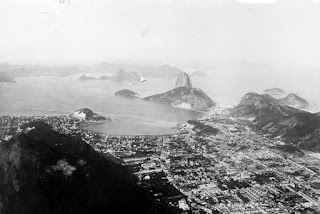- The name Rio de Janiero means "January River", but the name doesn't refer to any of the 200 or so rivers that run through the city. The theory goes that Portuguese explorers mistook the bay for the mouth of a huge river and the name stuck. This story is disputed by some historians as would seasoned explorers and experienced sailors be likely to get it wrong? Another possibility is that back in the 16th century, the world for river in Portuguese was the same as the word for bay.
- The bay in question is called Guanabara Bay and boasts 53 beaches and over 100 islands. The biggest of these is Ilha do Governador (Governor's Island) which is home to the city's international airport.
- It's not the capital of Brazil now (Brasilia is), but it was the capital between 1763 and 1960.
- Since 1931 the city has been watched over by a 30 foot high statue of Jesus - Christ the Redeemer, built to mark Rio's 100th anniversary. It's the largest art deco statue in the world and was voted one of the seven wonders of the modern world in 2007. Needless to say, being so tall and situated on top of a mountain, it gets struck by Lightning a lot. About 4 times a year. It's equipped with lightning conductors but even so, the statue once lost its right thumb due to a lightning strike.
- In 1950, it was the location of the best attended Football match ever. It was a World Cup final between Brazil and Uruguay and 173,850 fans turned up to watch the game - officially. It's not known how many more managed to sneak in. Sadly, Brazil lost, so the world's biggest football match became Brazil's biggest disappointment. It's not just sport that draws record breaking crowds, either. In 1994, Rod Stewart played to the world's biggest concert audience of 3.5 million.
- Rio de Janiero is also known for hosting the world's biggest party - its famous Carnival. The Carnival has been held every year since 1723. It lasts five days and attracts more than 4.9 million people, which represents a boost to the local economy of about £570 million. For the duration of Carnival, the mayor steps down and hands the keys of the city to a mythical jester called King Momo so party rules are in effect. That doesn't mean complete anarchy - there's a hefty fine for peeing in the street rather than using one of the 250,000 public conveniences brought in for the event.
- People who live in Rio are referred to as carioca. Why this should be isn't known. The word might have derived from the word for "white man's house" in the indigenous Tupi language, or from a type of fish which had scales resembling the armour the Europeans wore in the early days.
- Graffiti and street art is perfectly legal, so long as you steer clear of historically designated buildings. There's even an official Graffiti day on March 27 each year. The date was chosen because it was the day a graffiti pioneer called Vallauri Alex died, in 1987.
- Samba dancing is huge here. It's most obvious during Carnival but Rio's 200 or so samba schools will have not only been preparing for the Carnival competitions all year, but providing free classes and sporting activities to those who can't afford them. Samba schools are often based near favelas, or shanty towns (although many of the people who live in favelas are actually middle class). People are as loyal to their local samba school as they are to their football teams.
- In 2016, Rio became the first city in South America to host the Olympic Games.
Sunday, 1 March 2020
1 March: Rio de Janiero
Subscribe to:
Post Comments (Atom)

No comments:
Post a Comment